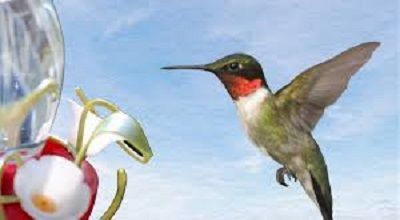Introduction to Hummingbird Food
Hummingbirds are fascinating creatures known for their vibrant colors and remarkable agility in flight. To attract these tiny wonders to your garden, providing a steady supply of hummingbird food is essential. This guide will walk you through the process of making hummingbird food, ensuring you can support these beautiful birds while enjoying their presence.
Understanding Hummingbird Diet and Nutrition
Before diving into the recipe, it’s important to understand what hummingbirds need from their diet. Hummingbirds primarily feed on nectar from flowers, which provides them with the energy they need for their high metabolism. The nectar is rich in sucrose, a simple sugar that serves as their primary source of fuel. Mimicking this natural source is key when preparing hummingbird food.
Ingredients for Homemade Hummingbird Food
Making your hummingbird food is simple and requires only two basic ingredients:
- White Granulated Sugar: This provides the necessary sucrose content that hummingbirds need.
- Water: Used to dissolve the sugar and create the nectar solution.
Recipe for Homemade Hummingbird Food
Step 1: Gather Your Supplies
Before you begin, make sure you have the following:
- Measuring Cup
- Pot or Saucepan
- Stirring Spoon
- Storage Container
Step 2: Mix the Nectar
- addMeasure the Water: Use a ratio of 1 part sugar to 4 parts water. For example, you can use 1 cup of sugar to 4 cups of water.
- Heat the Water: In a pot or saucepan, bring the water to a boil.
- Add Sugar: Stir in the sugar gradually until it dissolves completely. Boil the mixture for 1-2 minutes to ensure the sugar is fully dissolved.
Step 3: Cool and Store
- Cool the Nectar: Allow the nectar solution to cool to room temperature. Do not use hot nectar, as it can harm hummingbirds or damage feeders.
- Fill Feeders: Pour the cooled nectar into your hummingbird feeders. Extra nectar can be stored in a clean, covered container in the refrigerator for up to one week.
Tips for Feeding Hummingbirds
- Cleanliness: Regularly clean hummingbird feeders with hot water and mild soap to prevent mold and bacteria buildup.
- Location: Place feeders in a shady spot to keep the nectar fresh longer and away from predators.
- Seasonal Changes: During hot weather, change the nectar every 2-3 days to prevent fermentation. In cooler weather, it can last up to a week.
- Avoid Red Dye: Natural nectar is clear. Avoid using red dye, as it may be harmful to hummingbirds.
Conclusion
Making your hummingbird food is a rewarding and simple way to attract these delightful birds to your garden. By following this guide, you can ensure that your nectar is safe and nutritious for hummingbirds. Enjoy observing these fascinating creatures as they visit your feeder throughout the year!
FAQs
1. What is the best sugar to use for hummingbird food?
Answer: The best sugar to use for hummingbird food is plain white granulated sugar. Avoid using alternatives like honey, brown sugar, or artificial sweeteners, as these can be harmful to hummingbirds. White granulated sugar closely mimics the sucrose content found in natural flower nectar, providing the necessary energy for hummingbirds.
2. Can I use brown sugar or organic sugar instead of white sugar?
Answer: It’s best to stick with white granulated sugar when making hummingbird food. Brown sugar and organic sugar contain additional compounds that may not be suitable for hummingbirds. These sugars also have different compositions that may not dissolve as easily or provide the necessary nutrients in the same way as white sugar.
3. How often should I change the hummingbird food?
Answer: In warmer weather, it’s essential to change the hummingbird food every 2-3 days to prevent fermentation and spoilage, which can be harmful to hummingbirds. In cooler weather, you can typically change the nectar every 4-5 days. Regular cleaning of the feeder with hot water and mild soap is also recommended to prevent mold and bacteria buildup.
4. Is it necessary to boil the water when making hummingbird food?
Answer: Boiling water is recommended when making hummingbird food to ensure that the sugar fully dissolves. This helps create a clear nectar solution and prevents crystallization. Boil the water and sugar mixture for 1-2 minutes, then allow it to cool to room temperature before filling your hummingbird feeders.
5. Can I add red food coloring to the hummingbird food?
Answer: It is not necessary and not recommended to add red food coloring to hummingbird food. Natural flower nectar is clear, and the red coloring may be harmful to hummingbirds. Many commercial feeders already have red parts that attract hummingbirds, so there’s no need to add coloring to the nectar. Stick to a simple mixture of sugar and water to ensure the safety and health of hummingbirds.
Conclusion
These FAQs cover common questions about making hummingbird food, emphasizing the importance of using the right ingredients, maintaining cleanliness, and avoiding additives that could harm these beautiful birds. By following these guidelines, you can create a safe and nutritious nectar solution to attract hummingbirds to your garden.
